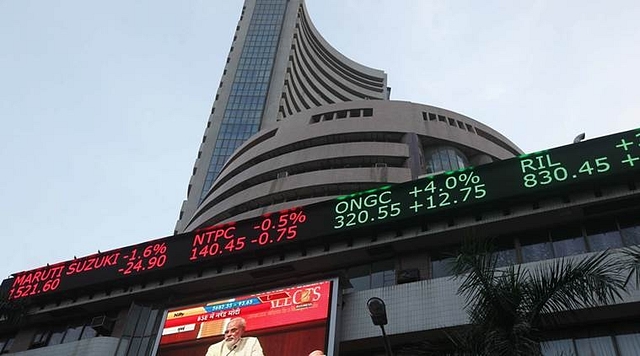
Why We Should Ignore MSCI Blackmail: India Should Stop Exporting Its Stock Markets
Our goal should be to get some of Asia’s biggest companies and some from the rest of the world with a large India presence to list on Indian exchanges.
It is time to end second-class status for our domestic markets.
On 9 February, India’s three main stock exchanges, the National Stock Exchange, the Bombay Stock Exchange and the Metropolitan Stock Exchange took a momentous decision to stop sharing data on share and index prices with the Singapore Stock Exchange and other foreign exchanges. While the sharing of live price feeds will continue until the notice periods expire, possibly in August this year, the decision marks a turning point in India’s tendency to achieve sub-optimal outcomes in its best market products and services.
The decision was immediately lambasted by foreign institutions, with the bosses of the Morgan Stanley Capital International (MSCI) Emerging Markets Index threatening crude blackmail by suggesting that the market classification of India could be impacted by this. But India should not bow down to this veiled threat. We have to stop exporting our markets, and we are on a strong wicket here. As Nilesh Shah of Kotak Mutual Fund wrote in The Economic Times last week, MSCI needs Indian prices and listed companies as much as we need them. MSCI’s warning letter needs to be relegated to the dustbin.
Let’s be clear: stock exchanges are a business as much as a public utility. When you share raw price feeds with foreign exchanges, you are effectively exporting your markets. It is akin to exporting iron ore and importing finished steel, thus weakening your terms of trade with the world, when India has cheap iron ore available back home. The more you export your markets, the more trades shift abroad and India becomes a price-taker in its own shares and securities.
In the case of our stock exchanges, there is actually no reason why foreign parties should not trade here, when there are so many foreign institutional investors and pension funds already registered with Securities and Exchange Board of India, and they trade here without fear. We provide a secure, well-policed and well-governed institutional structure for trading seamlessly.
The same applies to currency futures, where a lot of the trading takes place in places like Dubai and Singapore as much as in India. The external value of the rupee should be determined largely in India, and not outside.
In the world of global finance, trade will take place in countries with the largest markets, and without some degree of governmental push and a denial of feeds, it is not possible for Indian bourses to develop to their full potential. In a few years from now, India will become the world’s third largest economy in terms of nominal gross domestic product (currently it is No 5, behind the US, China, Japan and Germany, and roughly level with France and the UK. In a year or two, it will be a clear No 5. But 2025, we should be No 3).
It would be foolish of the world’s fifth and future third-largest economy to send all the trade moolah to offshore markets when the underlying action is all here. This is the right time to bring back our markets, so that by 2025 we will not only have huge volumes, but be in a position to rival volumes in the Tokyo, Singapore, Hongkong and other Asian markets in all products, from shares to derivatives to currency futures.
Our goal should be to get some of Asia’s biggest companies and some from the rest of the world with a large India presence to list on Indian exchanges.
It is time to end second-class status for our domestic markets.